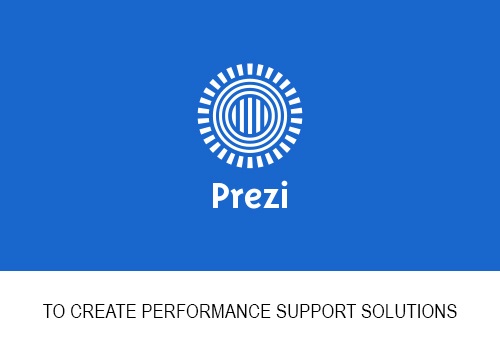
Today, e-learning is an integral component for training delivery in organizations worldwide. It has revolutionised the way learners learn and with its delivery extended to support tablets and smartphones, we will see a bigger focus on e-learning in corporate learning strategies.
There are several advantages that e-learning brings in and organizations are seeking ways to determine the Return On Investment (ROI) that can clearly establish the gains they will accrue. This article outlines what ROI is, how it can be computed and more specifically, how it can be increased.
Why is eLearning adopted?
Over the last two decades, most organizations have made investments in eLearning primarily for the following benefits:
- Anytime, anywhere access (on demand availability)
- Self-paced, interactive and more engaging learning (learner perspective)
- Less disruptive delivery (in contrast to ILT)
- Cost-effective (particularly when reaching out to a large audience)
- Consistency of message and easy updation of content
- Easy tracking of learner progress and completion (business perspective)
What is ROI?
ROI is the return on investment that an organization makes (ROI = Gain or Return/Cost). It can be determined through two factors namely the Investment made (or cost incurred) and Value/Gain accrued(or return).
A successful e-learning initiative should be able to demonstrate gains that are more than the investment.
How to determine costs and assess returns?
Costs are fairly easy to define and would normally include the cost of e-learning course development as well as associated costs of team members (including teams that are associated with the development process and Subject Matter Experts)
Typically, there would also be associated cost of the supporting delivery (LMS, Administrative cost of managing the initiative and other related infrastructure required for delivery)
Determining the “value” or “gain” is far more tricky. We nail this by looking at the gains for the organization as well as for the learners.
Organizational perspective
Let us begin by re-looking at the gains most organizations seek when they adopt e-learning and see how many of these translate to reduction in costs and hence improvement in returns.
- Less disruptive delivery: This translates to man-days available now to the organization that would have been allocated to travel and training in the ILT mode.
- Reduced travel costs: These can be determined easily.
- No associated costs for trainers: These can be identified easily
Learners’ perspective
Next, let us look at the gains that accrue on account of effective e-learning course designs:
- Immersive and engaging learning translates to better assimilation. This in turn leads to proficiency gain and a tangible increase in productivity.
- More learners across the organization can be trained in lesser time (while they get the flexibility to learn at their own pace).
- Coupled with tracking, the e-learning initiatives can be scheduled and completed faster as compared to ILT sessions.
What ROI methodology can be used?
Most of us are familiar with Kirkpatrick’s model of evaluation. In today’s context, adding Phillips’ ROI calculation as the fifth level makes this framework even more useful and relevant.
By using Level IV evaluation data, we can convert the results into monetary value. Then we can easily compare them against the cost of the e-learning program and determine the ROI.
To give you a sense of how it can be practically used, let me summarise the approaches we typically adopt:
- Level 1: Reaction is measured by taking feedback from learners. We have used online surveys in the past but now we add features of “Like the course” and “Recommend the course” options within our e-learning course framework.
- Level 2: Learning can be easily measured through scoring patterns in the end of course assessments.
- Level 3: Behavioural changes are certainly more difficult to assess. We use a combination of techniques to assess how much of the newly acquired learning is being applied on the job. This could be measured through improvements in efficiency or doing the same task with a new approach.
- Level 4: Business impact is generally measured through productivity gain, impact on quality measures through reduction in re-works, getting higher number of work assets first time right and so on.
- Level 5: ROI is normally calculated by converting the business impact gains (as shown in level 4) to a monetary value.
How can you maximise the ROI?
Here are some best practices that can help you maximise your ROI:
- Selecting right courses for e-learning: To begin with, it is a good idea to take time to do a detailed Training Needs Analysis and Competency Mapping exercise, which will help scope the learning gaps and possible options clearly. You need to choose e-learning projects that are significant and the identified proficiency gains must have a clear impact on the business.
- Efficacy of the e-learning program: Once you have selected the project that has high-leverage, the focus moves to creating courses that are effective. This needs a strong Learning Design core that Instructional Design brings in. The learning experience must be engaging and immersive with the focus of the course being a combination of Learn, Explore and Test.
- Assessment strategy: You must have an effective assessment strategy to help you evaluate if the training met the required cognition level and was indeed able to bridge the identified gap.
- Push the envelope to knowledge application (rather than knowledge acquisition): A great way to achieve this is by using Performance Support Tools (PSTs) that can complement or supplement the e-learning program. These just-in-time learning aids can be provided to the learners at their workplace and within their workflow. (They could contain Checklists, Ready-Reckoners, Read-This-First or Simple tips, Best practices and so on).
- Provide platform for collaboration in learning: Research shows that nearly 20% of our learning happens from feedback and from observing our co-workers (peers, seniors or role models). It is interesting to note that only 10% of learning happens through formal training. Providing platforms for social or informal learning will facilitate learning and can also be used to create live case studies of success.
While training budgets remain a constant concern for organizations, the onus is on L&D and e-learning professionals to justify the investments made in eLearning.
I believe that except for mandatory programs like Compliance, we can demonstrate the positive impact on business on account of e-learning initiatives by crafting learning that is assimilated fast and can be easily applied on the job.
Read More:



